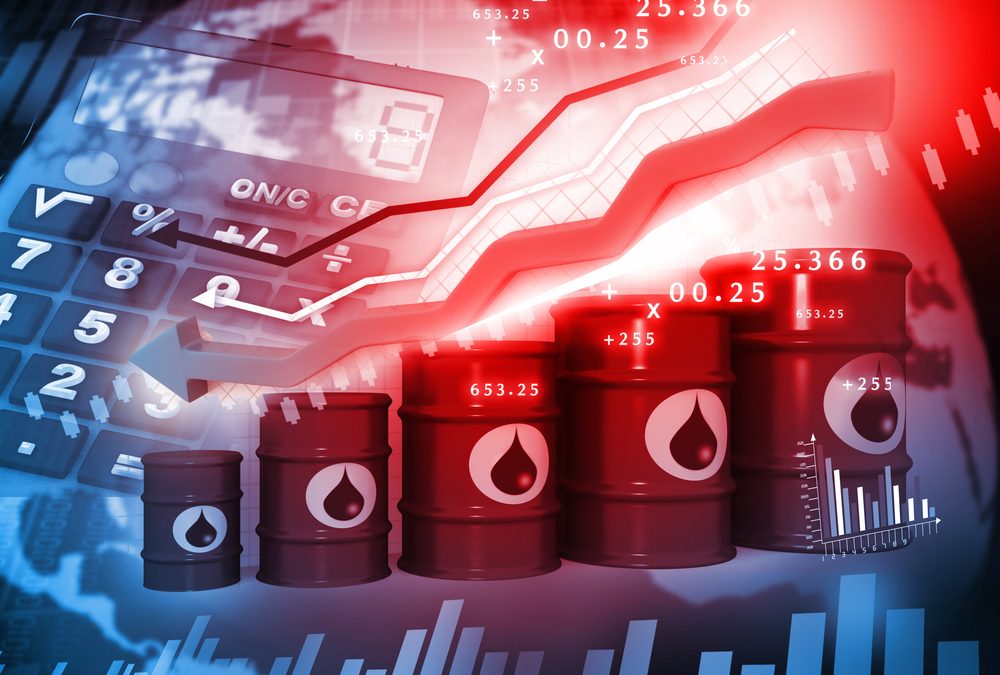The global oil market is entering a renewed phase of price consolidation, yet it remains deeply embedded in structural uncertainty. Brent crude, the global benchmark, currently fluctuates between $68.40 and $70, supported by seasonal fuel demand and a technical rebound in US equity markets. However, this apparent stability conceals an underlying fragility – one shaped by residual geopolitical tensions, the intensification of environmental compliance frameworks, and a persistent oversupply.
Oversupply Looms in the Background
According to the latest data consolidated by the International Energy Agency (IEA) and reported by Les Échos, the second half of 2025 is expected to register a supply surplus of nearly 1.1 million barrels per day. The increase is driven by simultaneous output growth in the United States, Libya, and Brazil. Even cautious players like Texas-based Diamondback Energy have revised down their drilling forecasts, citing saturation risks across key market segments.
Adding to medium-term supply pressure, BP has announced the discovery of the largest hydrocarbon field in 25 years – confirmed by Boursorama. Meanwhile, ExxonMobil is gradually resuming operations in Libya after a ten-year absence. In Asia, import quotas imposed by Beijing on independent refineries have resulted in a nearly 30% drop in Chinese imports of Iranian crude in July, according to an AFP–France24 briefing. While this is a localized contraction, it further undermines the global market’s equilibrium.
Geopolitics: A Persistent Source of Volatility
The latest statement by former US President Donald Trump – reported by Le Figaro – threatening India with secondary sanctions over its purchase of Russian oil, reflects the persistent political instability surrounding global crude flows. India swiftly denounced the remarks as “unjustified interference” and reiterated its commitment to energy sovereignty.
At the same time, Nayara Energy, a major Indian refiner backed by Rosneft, continues to operate outside the framework of EU sanctions, according to Reuters via Le Monde. These developments illustrate the growing complexity of global energy diplomacy, where strategic, commercial, and regulatory considerations now intersect – and where traditional alliances no longer guarantee the stability of flows.
Natural Gas: Drifting Below Support
On the natural gas front, the outlook remains decidedly bearish. European TTF futures have fallen out of their previous consolidation band near $3/MMBtu, hovering now around $2.90. Technical analysis confirms the absence of short-term support: trading volumes remain light, and any rebound appears reactive, rather than structural, driven by temporary oversold conditions.
The 2025 ESG Rules: A Structural Shift in Energy Trade
Since the July 1, 2025 implementation of the EU’s new ESG disclosure requirements for strategic raw material supply chains, the energy landscape has undergone a quiet but decisive transformation. Under Regulation (EU) 2025/1193, European importers of hydrocarbons must now demonstrate a “zero or residual acceptable ESG risk” across their full value chain – including human rights, Scope 1 – 3 emissions, and contract governance.
For firms operating in or sourcing from high-risk jurisdictions (Libya, Iran, Venezuela, Russia), the cost of compliance has increased substantially. A report by Bpifrance Assurance Export suggests that some energy majors are reassessing their exposure in North Africa and Central Asia, due to challenges in meeting ESG traceability standards. The recently reactivated Libyan field by ExxonMobil already faces scrutiny over its compatibility with the new regulatory framework.
Outlook 2025–2028: Margin Compression and Realignment of Trade Flows
Based on validated scenarios from the European Commission (DG ENER) and France Stratégie, the next three years are expected to bring:
- A structural reallocation of investment toward fossil energy sources with moderate ESG profiles (Norway, Canada, the Gulf states);
- A decline in net margins for operators exposed to jurisdictions with weaker governance, owing to rising ESG compliance costs;
- A partial shift in European demand toward certified biofuels, LNG, and renewable electricity, particularly in heavy transport segments.
In the gas sector, the outlook is more nuanced. European operators are accelerating diversification strategies, including long-term supply contracts with Qatar and the United States. This was confirmed in July through joint statements from Engie and Sempra (Les Échos, 22/07/2025). Barring major geopolitical shocks, gas prices are expected to stabilize between $3 and $3.40/MMBtu by late 2027.
Conclusion: A New Energy Hierarchy in the Making
The hydrocarbons market in 2025 is no longer defined solely by supply and demand dynamics. It has entered a phase of normative restructuring, where environmental compliance weighs as heavily as geological capacity or geopolitical risk. In this new paradigm, volatility may shift from being a cyclical anomaly to a structural feature – unless producers succeed in embedding ESG compliance into their core competitiveness models.
Sources :
Les Échos, France Stratégie, Boursorama Actualités, AFP via France24, Le Figaro Internationa, Le Monde, Bpifrance Assurance Export, Commission européenne, Engie / Sempra, Journal officiel de l’Union européenne
Important Disclaimer: The content of this article is provided for informational and educational purposes only. It reflects the author’s opinion based on information available at the time of publication, which may become outdated. This content does not constitute personalized investment advice, a recommendation to buy or sell, and does not guarantee future performance. Markets carry a risk of capital loss. The investor is solely responsible for their decisions and should consult an independent professional advisor before any transaction. The publisher disclaims all liability for decisions made based on this information.

